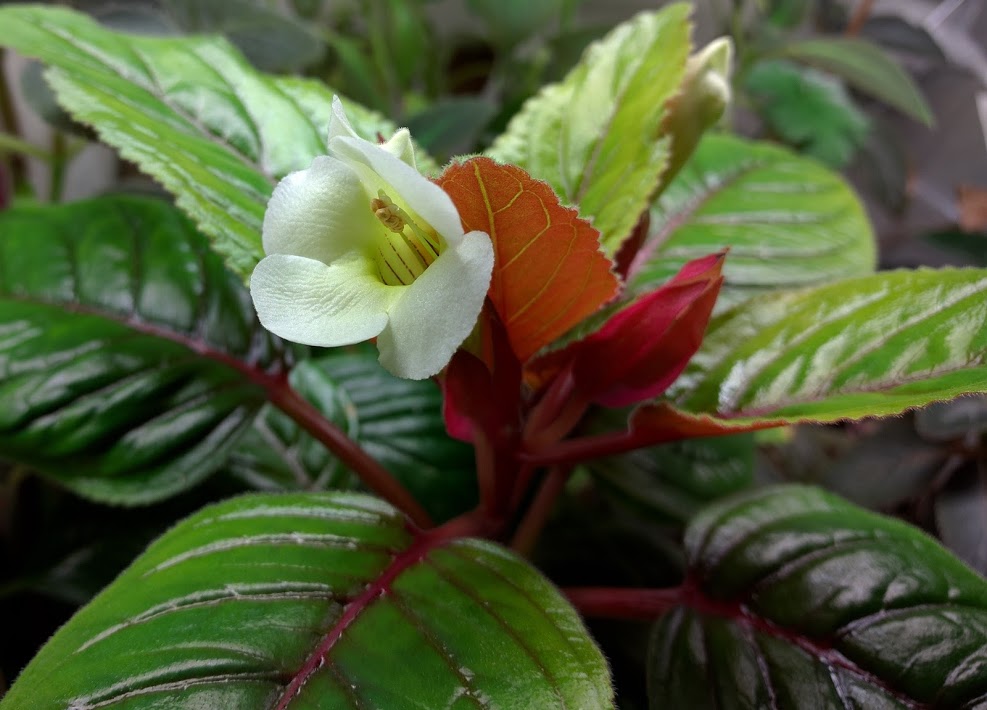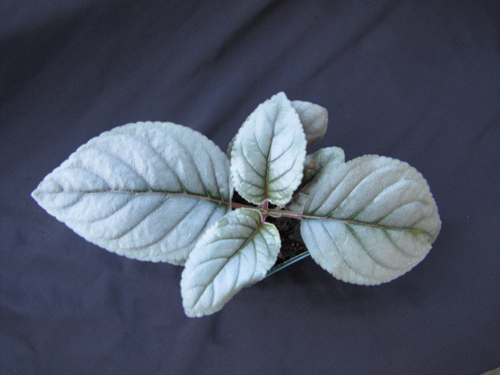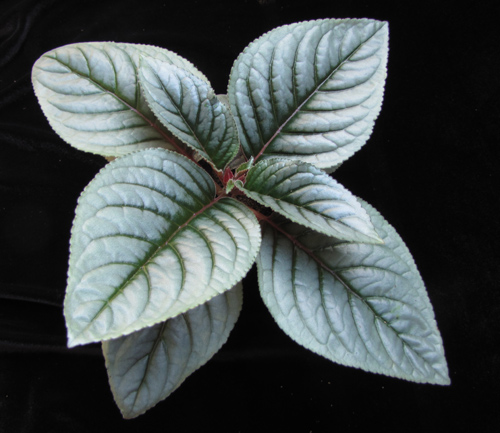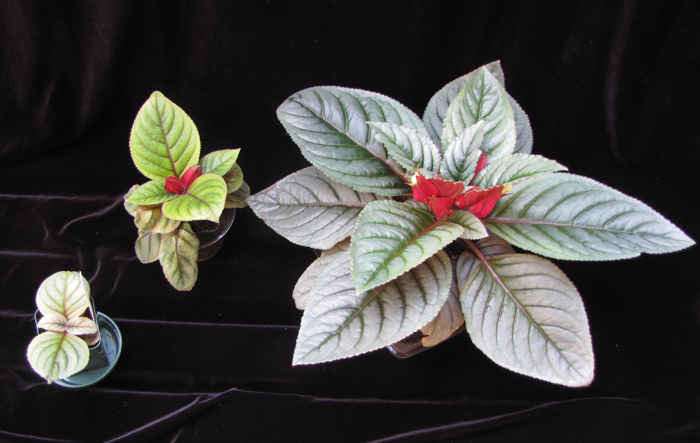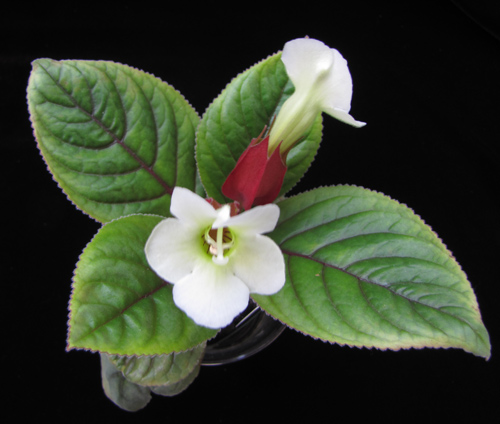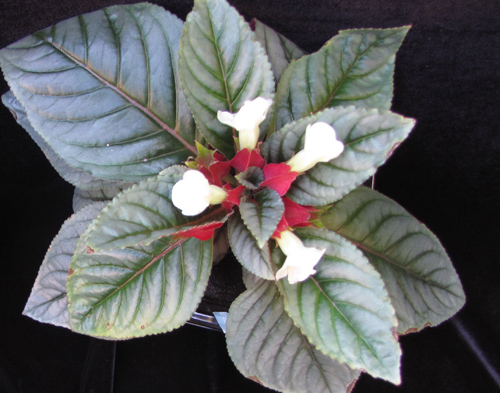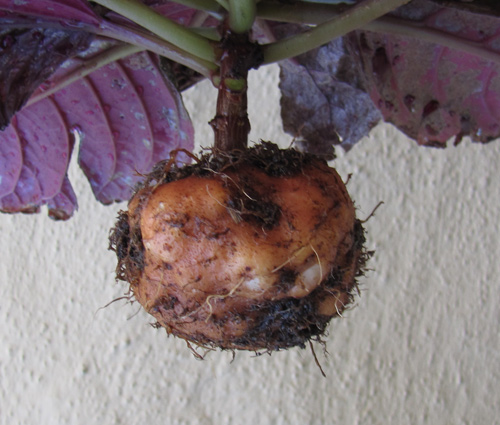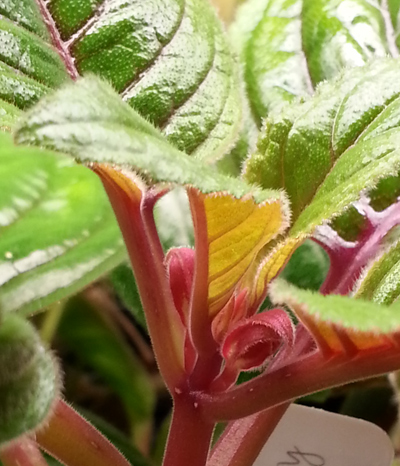Type Species
Sinningia helleri is the
type species of the genus
Sinningia, which means the genus is tied to this species.
As long as the genus is recognized, it must include
S. helleri.
Therefore, to some extent, the definition of sinningia depends on
the characteristics of S. helleri.
Until a few years ago, this species was unknown either in the wild
or in cultivation, and was believed extinct.
It was found in the wild in 2015 and Mauro Peixoto distributed seeds.
A few people sowed seeds obtained from Mauro.
Most got germination.
The seedlings bore a strong resemblance to
Sinningia guttata
plants at that stage.
|
